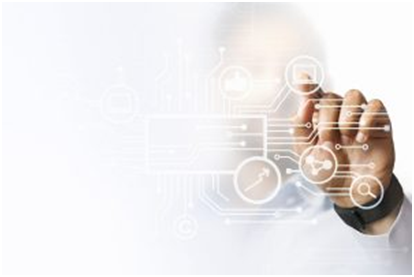
Technological Trends From Time To Time
The industrial
revolution always brings change. Two things are sure to happen—first, time and
cost-efficiency. Second, and increased productivity.
Industrial
revolution 1.0 in the 18th-century introduction of the steam engine brought
significant changes. Humans could travel long distances by train, shortening
travel time from a few days to a few hours.
The era of the
steam engine lasted about two centuries in civilization. After that came the
industrial revolution 2.0, marked by the discovery of electric power and the
conveyor belt theory. This era makes the production process faster and bulkier.
Builders of cars,
armored vehicles, to aircraft can do much more. They are no longer working
together on one vehicle but based on specialization. The electric engine and
tire movement allowed them to do only one part.
After the second
world war, came the third industrial revolution, namely the era of robots and
computers. For the first time, the computer is present. At the beginning of the
presence of computers, the shape is still tremendous.
Slowly the
dimensions of the computer shrink until it can be planted in a production
machine or taken anywhere (mobile). In this era, computers began to move as
operators, replacing humans.
Then in the 2000s
came the era of revolution 4.0. In this era, the role of computers has become
more sophisticated. Automation and cyber technologies are starting to appear in
manufacturing.
Internet of
Things (IoT) sensors and devices are proliferating, allowing everything
remotely controlled to operate independently with programming systems.
Big data and
artificial intelligence solutions developed well in the era of the industrial
revolution 4.0. Billions of data are entered into computers, processed, and
analyzed so that devices in a company or government can make decisions quickly
and accurately.
Storage in the
cloud or cloud computing is also starting to grow. Companies no longer store
their data within the company but work with third parties. The benefits? the
cost incurred by the company is cheaper than having to provide, maintain, and
operate the storage system yourself.
In the Virtual
Lunch and Learn ICT Trend 2021 -2024 event, President Director of PT Alita
Praya Mitra, Teguh Prasetya, estimates that several technologies will emerge
and impact the retail and corporate segments in the era of industrial
revolution 4.0.
The increasing
number and variety of IoT solutions and the presence of 5G with latency under
one millisecond will impact business development in the next 4-5 years.
At that time,
technological developments will sprint. To not lose money – because the
investment in previous technology has not returned – technology and
telecommunications companies must work together to maintain sustainability.
Teguh also
estimates that technology trends from 2021 -2024 will be divided into four
layers: devices, networks, platforms, and applications. From the device side,
it is predicted that devices attached to the body and not attached to the body
will grow.
Then. Artificial
intelligence-based devices will also grow as the chips in sensors get smaller,
more applications, and more edge computing will be located close to the device.
From the network
side, 5G release 16 will also be introduced this year so that 5G for IoT will
be available and will be massive. This 5G IoT solution will make corporations
more digital in the future. Then, there will also be a Low Earth Orbit
Satellite (Leo satellite) which can provide high internet speeds with lower
latency.
From the platform
side, there will be many platforms for security and device data management.
Hybrid cloud computing platforms, big data are also increasingly present for
corporations.
Finally, from the
application side, the trend in the future will be more smart homes, smart
buildings, smart factories, smart offices, smart schools, and smart health that
operate using artificial intelligence-based technology.
The process of
data transportation is getting faster due to the presence of 5G, making more
data sources analyzed by machines. As a result, the decisions made by the
devices on the orders received will be more accurate and better. Those are
driving digital transformation in every sector, such as in manufacturing,
education, and health.
After that, what? Enter the era of society 5.0 or the industrial
revolution 5.0. In 2017, the idea of industrial revolution 5.0 was introduced
by Japanese Prime Minister Shinzo Abe. In the age of increasingly powerful
technology, and is expected to reduce the gap between humans and economic
problems in the future. To what stage is Indonesia?
TAGS:
#alitaprayamitra, #gobeyond, #technology